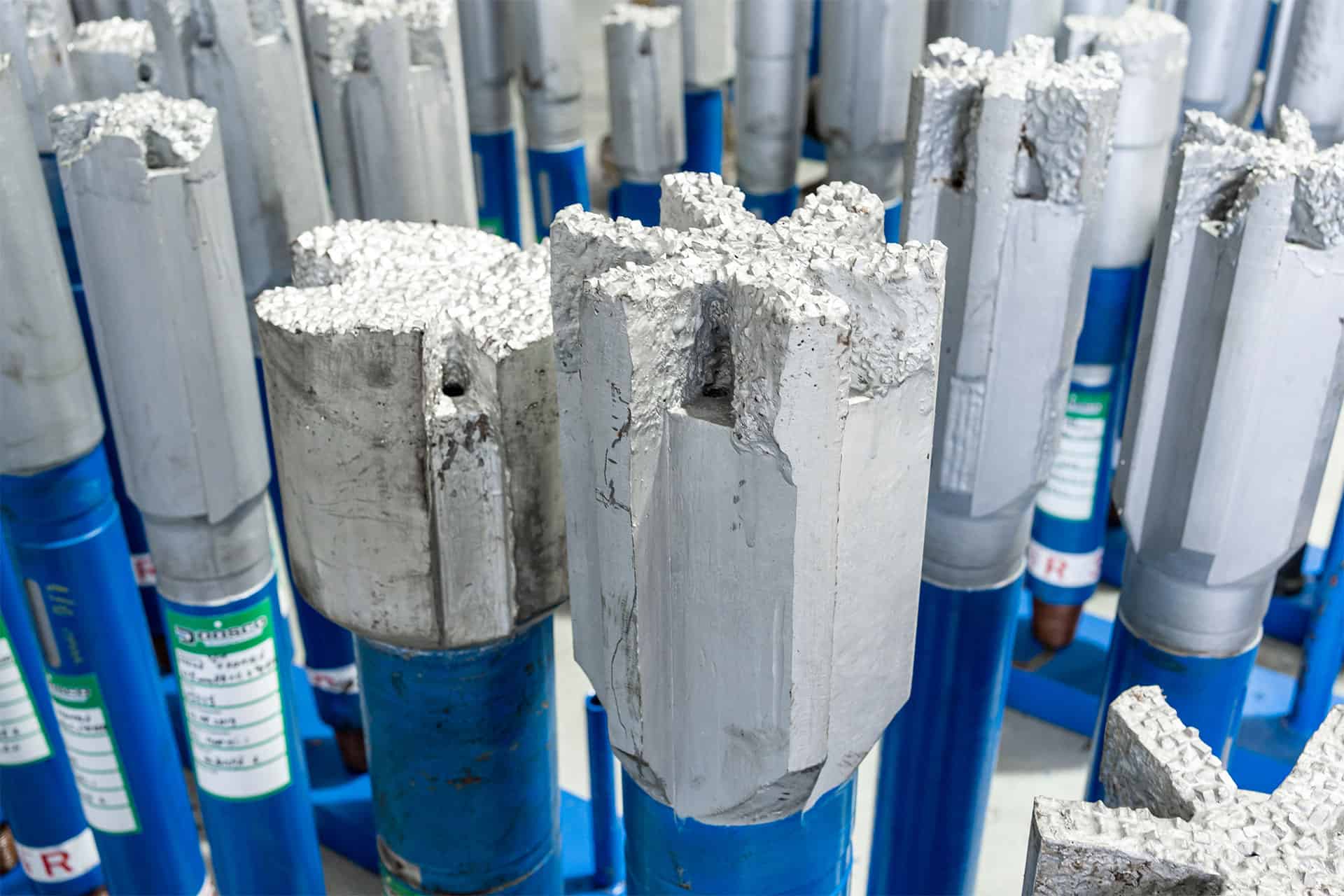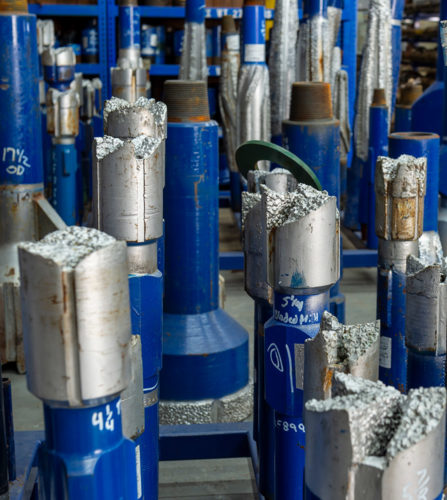Milling Tools in Oilfield
Milling Tools in Oilfield

There are different types of milling tools used in the oilfield. They aim to cut and remove material from equipment or tools located in the wellbore. Successful milling operations require an appropriate selection of milling tools, fluids, and techniques. The mills, or similar cutting tools, must be compatible with the fish materials and wellbore conditions. The circulated fluids should be capable of removing the milled material from the wellbore. Finally, the techniques employed should be appropriate to the anticipated conditions and the likely time required to reach the operational objectives. Different types of milling tools have different functions. Let's learn one by one.

Flat Bottom Junk Mills
Application
Hard-faced with Incoloy, inserted tungsten carbide particles, are designed to mill away stuck fish that cannot be retrieved by conventional fishing methods. Their super penetration rates result in fewer round trips. They are highly resistant to impact loads and their self-sharpening feature ensures maximum useful life. Loose junk can be "spudded" on to break it into smaller pieces so that it can be held in place and cut by the mill
Construction
This flat bottom mill is dressed with crushed tungsten carbide and is a very aggressive mill used to mill up bit cones or other pieces of junk. The mill is sturdy enough for light spudding on the junk to break it up into smaller pieces. Large circulation ports improve mud circulation for cooling and the removal of cuttings.
Concaved Junk Mills
Application
This type of Junk Mill is suitable where heavier and more tortuous milling application is required, e.g. such as bit cones, roller reamer cutters, and pieces from downhole tools. The density of the milling material e.g. tungsten carbide chips, will enable the Mill to chip and grind away at the milled object, with the extra depth of dressing design, ensuring as long a life as possible from the mill can be attained.
Construction
The cutting face is made concave to facilitate centering the loose junk to enable more efficient and effective grinding of junk. The Concave Junk Mill consists of a body and concave cutting surface dressed with tungsten-carbide particles. There is a connection thread at the upper part of the body. Ports and grooves for effective cooling and intensive washing are placed at the bottom. The side surface of the grinders is dressed to match the body diameter.
Conebuster Junk Mill
Application
Designed for complex milling operations such as heavy milling, bit cones, cement, slips, reamers, retainers, wrenches, or other tools that may be lost downhole.
Construction
Conebuster mills feature a concave face that helps properly center the fish under the mill for the most efficient milling. A thick layer of tungsten carbide material ensures a long tool life. Special design and carbide cutting structure effectively reduce milling times. Local customization is available for all types of mills.
Bladed Junk Mills
Application
Milling almost anything in the wellbore, including, but not limited to: bit cones, bits, cement, packers, squeeze tools, perforating guns, drill pipe, tool joints, reamers, and reamer blades.
Construction
Bladed junk mills are designed to mill any type of junk or debris from the wellbore. These "workhorses" of downhole milling operations can be dressed either with tungsten carbide inserts, for stationary fish or junk, or with crushed tungsten carbide, for loose fish or junk. Large circulation ports and watercourses improve fluids circulation for cooling and facilitate cuttings removal. The blade design holds junk to be milled under the milling face and cuts continually rather than sweeping the junk ahead of the blades.
Skirted Junk Mill
Application
A skirted flat bottom or concave type mill is best for milling a flared or burred top of fish before engagement with an overshot. Because the skirted mill is stabilized and the fish is contained within the skirt, the mill cannot slip off to the side.
Construction
A skirted junk mill is manufactured in three of four components, readily allowing replacement of worn parts, and the facility to select the variety of flat-bottomed junk mills discussed in this section. A choice of skirts is also offered for the skirted mill using two types of wash-over shoes, as well as an overshot-type cut lip guide.
Rotary shoes
Application
Used to wash over tubular that has become sand stuck, mud stuck, or mechanically stuck and for milling over packers, retainers, and bridge plugs. Made of specially tempered steel and dressed with tungsten carbide inserts and/or crushed tungsten carbide, rotary shoes provide the ultimate in strength, durability, cutting speed, and penetration rate. They are usually run on the bottom of one or more joints of washover pipe to cut clearance between the fish and the wall of the wellbore. Their head designs are available in rough OD, for working in open hole wellbores, or smooth OD, for working in cased-hole wellbores.

Taper Mill
Application
A tapered Mill is designed for milling through various restrictions. The spiral blades and pointed nose dressed with crushed tungsten carbide make the mill ideal for reaming collapsed casing and liners, cleaning permanent whipstock windows, milling through jagged or split guide shies, and enlarging restrictions through retainers and adapters. The Taper Mills are designed for the following applications:
Cutting flared edges and pieces of metal on the inside surface of the drill pipe or casing;
leaning of casing windows;
working the ID of tubing, casing, or drill pipe;
Milling of collapsed casing or pipes during drilling and workover operations.

Pilot Mill
Application
Pilot Mills have been proven in the field to be well suited for milling liner hangers, eliminating inside cuts. They are also well suited for milling wash pipes, safety joints, crossover swages, and washover shoes.
Special Junk Mills
Application
Extremely durable mills, make them ideal for cutting through cemented tubular and packers. These mills have a deep throat design and are heavily layered with tungsten carbide material to ensure a long life. They are perfect for applications where milling up large amounts of junk downhole is required.
The main component of all of those milling tools is tungsten carbide composite rods or carbide wear inserts, or both together. Tungsten carbide has extra hardness and high wear-resistant properties. So tungsten carbide composite welding rod has wear and cutting properties coupled with high-end weldability and low fuming. Cause the main material of cemented carbide welding rods is tungsten carbide grits. It makes composite rod has excellent wear & cutting properties in the drilling industry.
Zhuzhou Better tungsten carbide welding rod only uses the carbide anvil as raw material. The crushing and sieving technology developed after 5 years makes our cemented carbide crushed grits more round in appearance, which ensures the stable physical properties of cemented carbide composite rods. Together with the best flux, the fluidity of the electrode is greatly increased. It can be easily used even by less experienced welders. Uniform and stable hardness of cemented carbide welding rods, more wear-resistant
All of ZZbetter tungsten carbide fishing & milling inserts are manufactured in our special grade, providing a heavy-duty metal cutting grade of tungsten carbide. Its extreme toughness is well suited to downhole applications, providing excellent performance when cutting steel.
The Grades and designs are tailored to each customer based on individual needs and requirements. Our inserts have the right combination of hardness and toughness with excellent braze ability for a variety of tool geometries.





















